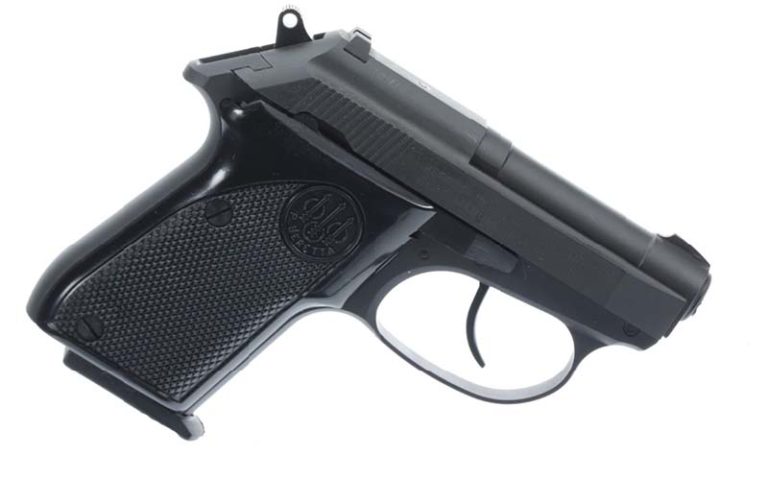
Smaller than their Cheetahs, but with more bite than a housecat, the Beretta Tomcat and Bobcat can still make for good backup guns.
Beretta’s history of making pocket pistols is longer than most know, and their current production models often seem to be overlooked. The Beretta Tomcat, Beretta Bobcat and the pistols they descended from have consistently been staples of the pocket pistol world, but they’ve never been at the top of the list either. Beretta’s original pocket pistol, the M418, never reached the popularity of guns like the Colt 1908 Vest Pocket, and their 950 series typically proved to be less popular than contemporary double-action offerings. Despite this, Beretta’s current feline family of pocket pistols are still in production and feature some interesting design choices that can still prove desirable for those in search for their perfect backup gun.

Beretta Pocket Pistol History
Designed around the first world war, the Beretta M418 was the company’s first major attempt at a pocket pistol. Chambered for .25 ACP and utilizing a striker-fire mechanism, the M418 only has its size and caliber in common with Beretta’s later pocket pistol designs. It was used by some Italian officers during WWII, and some know it as James Bond’s first pistol that he used in the first five books before transitioning to his famous Walther PPK. Near the end of the pistol’s production, it was sold in America under the name “Panther”, foreshadowing the company’s habit of naming their small handguns after predatory cats.
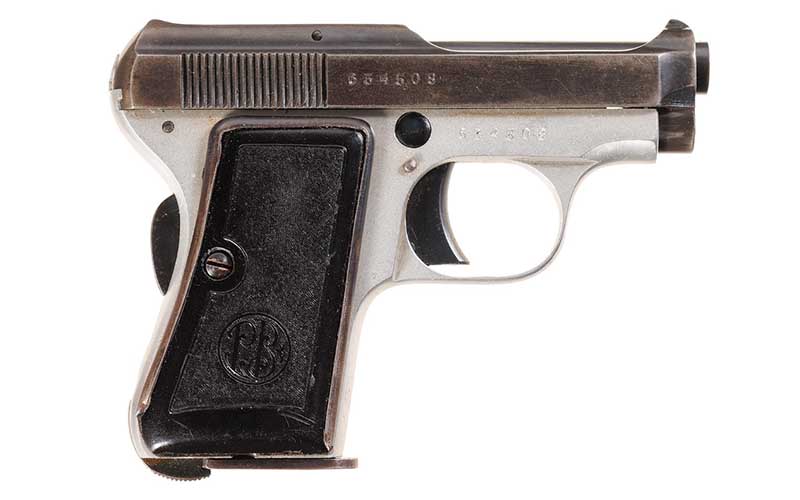
Understanding the dated nature of the M418’s design, by the 1950s Beretta had begun work on their next pocket pistol series—the Beretta 950. Now available in .22 Short as well as .25 ACP, the 950 series introduced many features that would come to define Beretta pocket pistols. Hammer-fired and now sporting a tip-up barrel, this design is the true father of the Beretta Tomcat and Bobcat pistols, with only its lack of a cat-centric naming convention distinguishing itself from its progeny. The final obsolescent feature found on the 950 (or Jetfire) series is its single-action trigger. The design stayed in production for a surprisingly long time until 2003, as Beretta had already been offering an improved DA/SA pocket pistol model since 1968 called the Model 20.
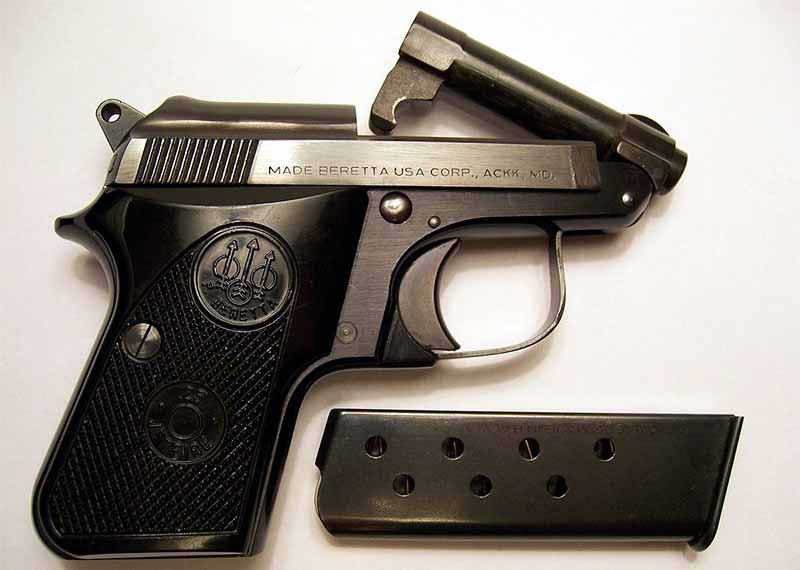
The Model 20 was produced until 1985 following the introduction of its improved model—the 21A or Beretta Bobcat. This is one of the two remaining Beretta pocket pistols that are still in production, with the other being the Beretta Tomcat 3032. The Tomcat can be thought of as just a scaled-up Bobcat, identical besides its larger .32 ACP chambering.
Modern Offerings
The Beretta Tomcat 3032 and Beretta Bobcat 21A are still in production, with a few different variants of each available. They come in black, stainless steel (Inox) and FDE finishes, and each has a “covert” model as well that features a threaded barrel. The standard 21A Bobcat is still available in .25 ACP and .22 LR, but all other Bobcat variants come in .22 LR only. The Beretta Tomcat, as always, is chambered only for .32 ACP. All of these guns are fed by 7-round magazines.
The threaded models have been poplar suppressor hosts since their release earlier this year, but they mostly have utility as range toys and weapons for wannabe wetworkers. Because we’re looking at these Berettas as pocket pistols for concealed carry, we’ll be sticking to the standard, unthreaded models.
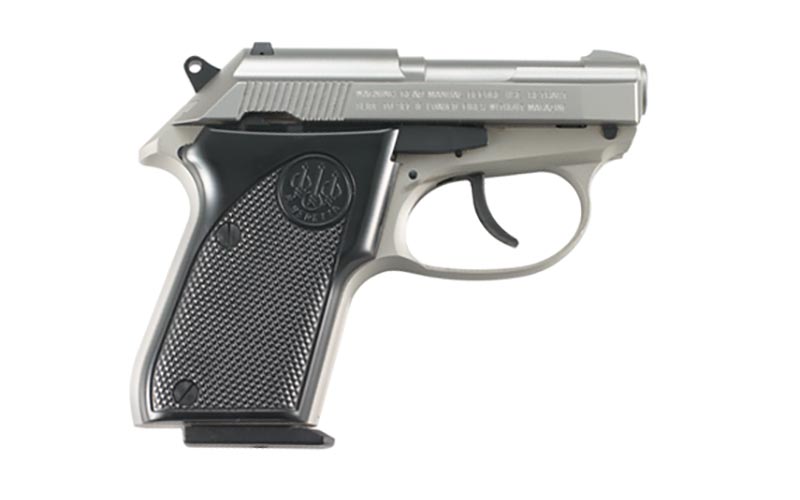
Carrying A Cat
When it comes to carrying a Beretta Tomcat or Bobcat, they have pros and cons like any other pocket pistol. Slightly larger than a Colt 1908 Vest Pocket, the Beretta Bobcat is on the slightly bulkier side of the pocket pistol spectrum, but its aluminum alloy frame brings it in at about an ounce lighter than the iconic Colt. The .32 ACP Tomcat is naturally a bit larger and heavier as well. Despite these facts, both the Bobcat and the Tomcat are just as pocketable as any other pistol in their class, they just aren’t the best choice for those seeking the smallest or lightest gun possible. That being said, they are still very small and concealable.
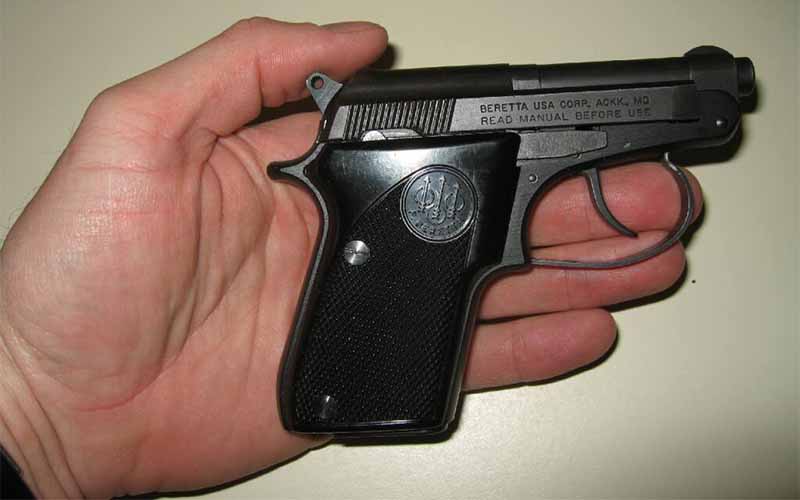
Beretta’s pocket pistols compensate for their relative bulk in other areas—namely reliability, shootability and safety. The obvious benefit of these guns’ extra size and weight is that they positively impact ergonomics and felt recoil. The more gun you have to grip, the easier it is to shoot, and more mass results in less recoil even when discussing calibers as anemic as these. This should all contribute to a gun that’s easier to score good hits with, both on and off the range. The Beretta Tomcat is obviously the gun of choice for those willing to trade some concealability for stopping power, but when it comes to the Bobcat the choice is less clear. Between .22 LR and .25 ACP, there are pros and cons to each, and those in the market for a Beretta Bobcat will have to determine what’s best for them.
These guns’ simple blowback actions contribute to their reliability, but many pistols in small calibers operate this way as well. It’s these two cats’ simple designs that both help and hinder their potential for reliability. They feature no extractors, instead use the pressure from a fired cartridge to eject the spent shell. The catch with this system is that while not all loadings may reliably cycle through it, once you find one that does it should run like a top. When it comes to selecting a Beretta Bobcat, keep in mind that centerfire ammo will always be more reliable than rimfire.
The real stand-out feature on Beretta’s pocket pistols are their tip-up barrels that were introduced with the 950. Beretta wasn’t the first to come up with the concept, but they’re the only ones to stick with the design into modernity. A couple of very old pistols featured it as well, but otherwise, only Berettas and some Beretta clones incorporate the unique idea that has several noticeable advantages. Firstly, the tip-up barrel eliminates the need to ever manually rack the slide. This can be appreciated by those with hands too weak or large to easily manipulate one of these guns’ slides, as it allows for a round to be directly dropped into the chamber. This system also allows for the gun to quickly be made safe or opened up to clean its chamber or clear a jam. The ability to quickly disengage the barrel combined with its exposed hammer, double-action trigger and manual safety all help to make the Beretta Tomcat and Bobcat two potentially very safe pocket pistols.
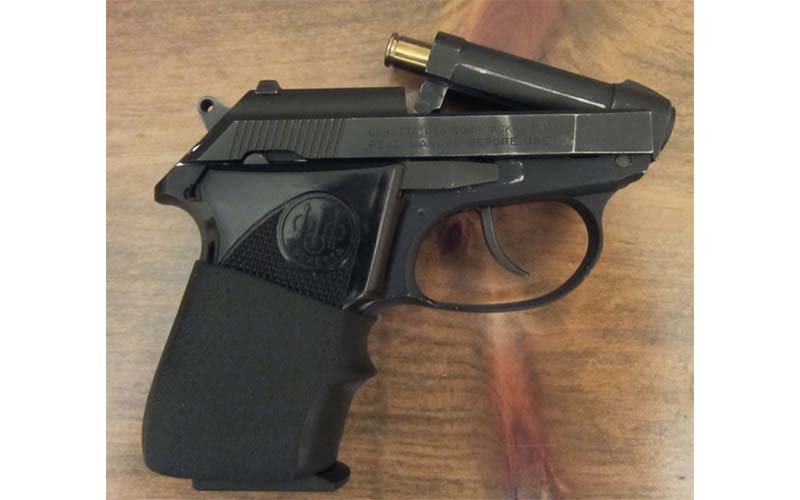
Traditionally known as mouse guns, Beretta’s two currently produced pocket kittens still have plenty of desirable features for those interested in backup guns, deep concealment or comfortable pocket carry. The Beretta Bobcat and Tomcat both have high potentials for reliability, modern DA/SA triggers and an old-world style that most other contemporary pocket pistols just don’t have.
For more information on the Beretta Tomcat or Bobcat, please visit beretta.com.
More Pocket Pistols:
- Pocket Pistols: Still Viable For Defense?
- The Fascinating History Of Bicycle Guns
- Classic Pocket Pistol: Colt 1903
- The L.W. Seecamp 32
- The HK P7K3

Next Step: Get your FREE Printable Target Pack
Enhance your shooting precision with our 62 MOA Targets, perfect for rifles and handguns. Crafted in collaboration with Storm Tactical for accuracy and versatility.
Subscribe to the Gun Digest email newsletter and get your downloadable target pack sent straight to your inbox. Stay updated with the latest firearms info in the industry.

![Best Concealed Carry Guns In 2025 [Field Tested] Wilson Combat EDC X9S 1](https://gundigest.com/wp-content/uploads/Wilson-Combat-EDC-X9S-1-324x160.jpg)


![Best 9mm Carbine: Affordable PCCs [Tested] Ruger Carbine Shooting](https://gundigest.com/wp-content/uploads/Ruger-Carbine-Shooting-100x70.jpg)
![Best AR-15: Top Options Available Today [Field Tested] Harrington and Richardson PSA XM177E2 feature](https://gundigest.com/wp-content/uploads/Harrington-and-Richardson-PSA-XM177E2-feature-100x70.jpg)

You have a photo of the “Beretta 950 Jetfire.” The next line in the article directly below this photo and caption is “The DA/SA Jetfire was known as the Model 20.” This contradicts the your photo caption and is incorrect. The 950 was indeed the Jefire. The Model 20 had no other name that I am aware of. Of the Models 20, 950, and 21A, the Model 20 is my favorite. It’s smaller than the 21A, about the size of the 950, which I prefer. And it is DA/SA, which I prefer over the DAO of the 950.
Thank you for pointing this out, while similar in design, you are correct that the Model 20 technically does not belong to the Jetfire line. The article has been edited to reflect this distinction.
I own one of each. My Bobcat was purchased 55 years ago. It shoots only 22 high velocity hollow point shorts & is very accurate inside of ten yards. I bought my Tomcat about 10 years ago & it is such a nice shooting, dependable & accurate gun that my wife has now taken it over as her carry gun. I would highly recommend the Tomcat for a back up or even a primary carry gun.
I have used sundry of the little Berettas for many years starting with an Italian-made 950 Minx in .22 short, and later followed with an American version, the 950s S with safety, and, surprisingly, a Brazilian-made gun. One variant of the 950 was called the M-2 Minx and had a longer barrel, about 3 5/8 inches and was ideal for a camping or kit gun. I wish Beretta would offer a similar barrel length on the Model 21. It would not make the gun any less concealable, and would make it easier to shoot accurately and add significantly to the velocity of the .22 LR cartridge. Speaking of accuracy, I once rigged up an M-2 Minx to a Lee Machine rest and was able tom get ten-shot 25 yard groups as small as 1.125 inches.